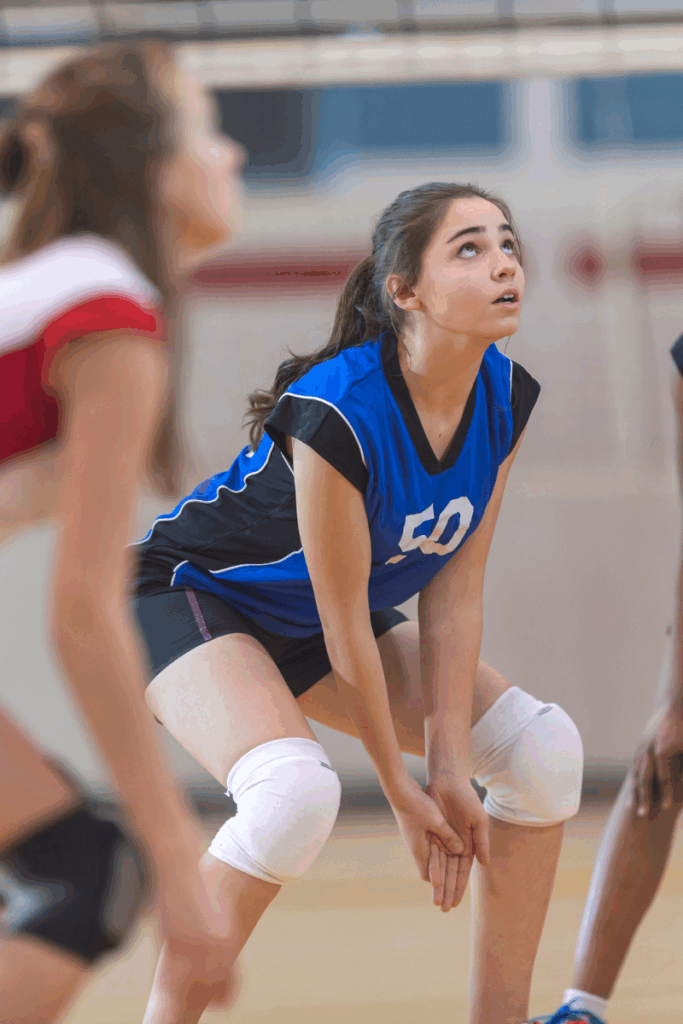How High School Athletes Can Stay Injury-Free This Winter
Posted by: Reform Physical Therapy in Injury Prevention, Reform PT Education, Winter Wellness, Youth Sports on November 24, 2025
The high school athlete winter season is exciting, but it also brings extra challenges that can increase the risk of injury. Cold temperatures, tight muscles, busy practice schedules, and slippery conditions make it harder for young athletes to stay safe. The good news is that with the right habits and smart preparation, most injuries can be prevented — and your athlete can stay strong, confident, and ready to perform all season long.
Whether your athlete plays basketball, hockey, indoor track, wrestling, or is training in the off-season for spring sports, these simple PT-approved tips can help them stay healthy and performing their best all winter long.


Why Winter Increases Injury Risk
Winter changes how the body feels and moves. Cold temperatures make muscles tighten and lose flexibility. When athletes go from a warm classroom straight into intense practice, their bodies aren’t ready for sudden movement. Add slippery sidewalks, packed schedules, and limited sunlight, and it becomes easy to overstress muscles or make a wrong move. Cold temperatures make it harder for a high school athlete winter to stay flexible and ready for fast movements, which increases the chance of strains or pulls.
Understanding these risks is the first step to preventing them.
Warm Up Longer Than Usual
In the winter, muscles need more time to warm up before heavy activity. A proper warm-up improves blood flow, increases flexibility, and wakes up the nervous system.
Athletes should start with light movement like jogging in place, jumping jacks, or dynamic stretches. This prepares their body to sprint, jump, pivot, or change direction without risking a strain or pull. A solid warm-up is one of the best ways for a high school athlete winter to protect their muscles and joints before intense practice.
A good warm-up should last at least 5–10 minutes in the winter — longer if coming in from the cold.
Focus on Dynamic Stretching
Dynamic stretching helps muscles get ready for movement. Instead of holding still like a traditional stretch, dynamic moves keep the body active. Examples include leg swings, arm circles, hip rotations, and walking lunges. These movements improve flexibility and activate the muscles athletes rely on the most. Dynamic stretching before practice and static stretching after practice is a simple routine that keeps athletes feeling strong and flexible.
Don’t Skip Strength Training
Stronger muscles and joints can handle more impact and stress. Even during the busy winter season, strength training is essential for performance and injury prevention. Athletes can use bodyweight exercises like squats, planks, wall sits, calf raises, and push-ups. These build stability, protect the knees and ankles, and improve balance — all key for winter sports. A few short strength sessions each week can make a huge difference.


Stay Hydrated Even When It’s Cold
Athletes often forget to drink water in the winter because they don’t feel as thirsty. But proper hydration keeps muscles flexible and reduces cramps, fatigue, and strains.
Carrying a water bottle throughout the school day and taking sips during practice helps keep muscles performing their best.
Wear Proper Footwear
Good shoes provide grip, support, and stability — especially on slippery ground. Athletes should wear the right footwear for their sport, and replace worn-down shoes before the season gets busy.
If walking outside between buildings, encourage athletes to move carefully and avoid icy patches to prevent slips and sprains.
Fuel the Body With Winter-Friendly Nutrition
Shorter days and colder weather can make athletes feel tired more often. Eating enough protein, healthy carbs, fruits, and vegetables helps them stay energized. Simple snacks like yogurt, bananas, granola bars, or peanut butter toast support healthy performance during long practices.
Eating well also keeps the immune system strong during cold and flu season.
Prioritize Rest and Recovery
Winter sports seasons are intense. Without enough rest, athletes become more vulnerable to sprains, strains, and overuse injuries.
Quality sleep, stretching, and taking rest days seriously give the body time to repair and rebuild. If an athlete feels sore or extra tired, it’s okay to scale back for a day instead of pushing to the point of injury.
Listen to Early Pain Signals
Minor pain is a warning sign that something needs attention. Ignoring early pain can lead to bigger issues, like tendonitis, muscle strains, or stress injuries.
Encourage athletes to speak up when something doesn’t feel right — even if it seems small. The earlier a problem is addressed, the faster it can be fixed.
When to See a Physical Therapist
A physical therapist can help athletes move better, recover faster, and stay in the game. PTs can check strength, mobility, balance, and movement patterns to catch issues before they become injuries.
If an athlete has recurring pain, soreness that doesn’t improve, difficulty with certain movements, or keeps re-injuring the same area, a PT evaluation can get them back on track safely.
Conclusion
Winter doesn’t have to be an injury season. With warm-ups, smart training, good nutrition, and proper recovery, high school athletes can stay strong, confident, and injury-free. A few small habits can protect their body and keep them performing at their best all winter long. With the right habits and preparation, a high school athlete winter can stay injury-free and perform at their best all season long.
Want help preventing sports injuries? Call us today to get your athlete seen.
